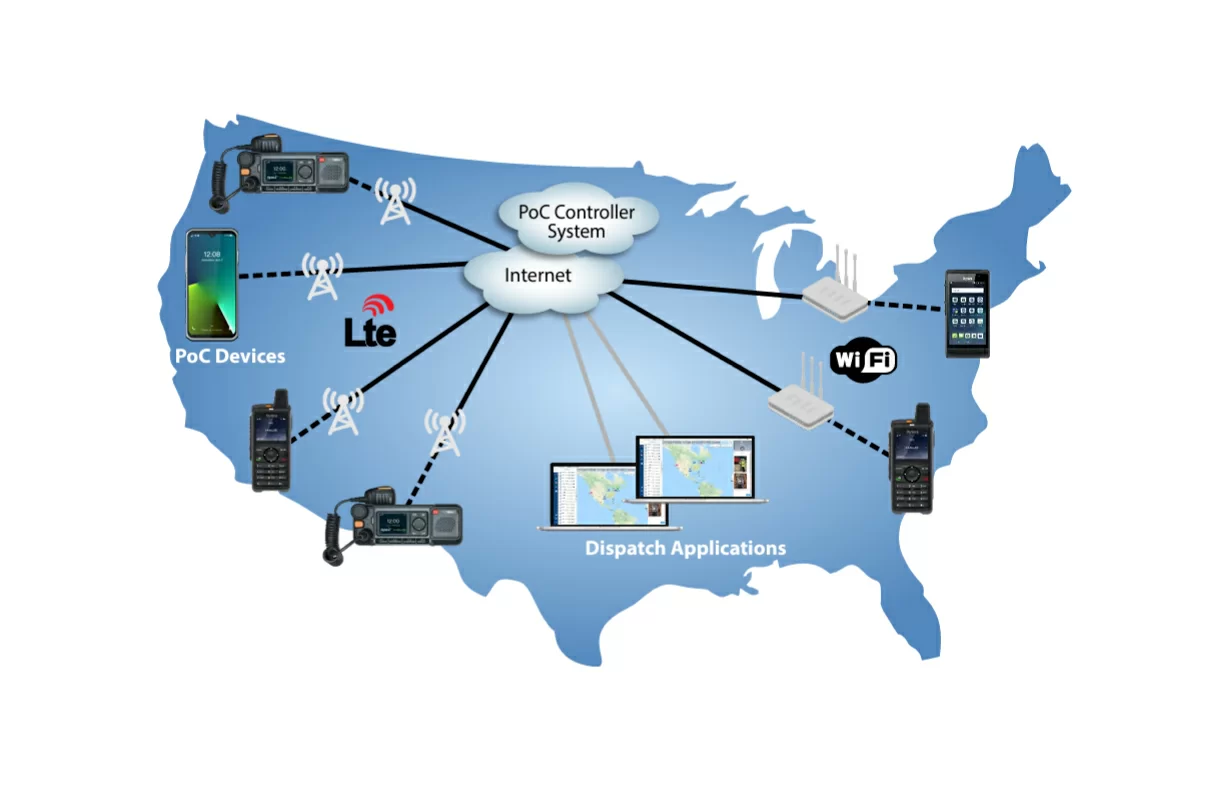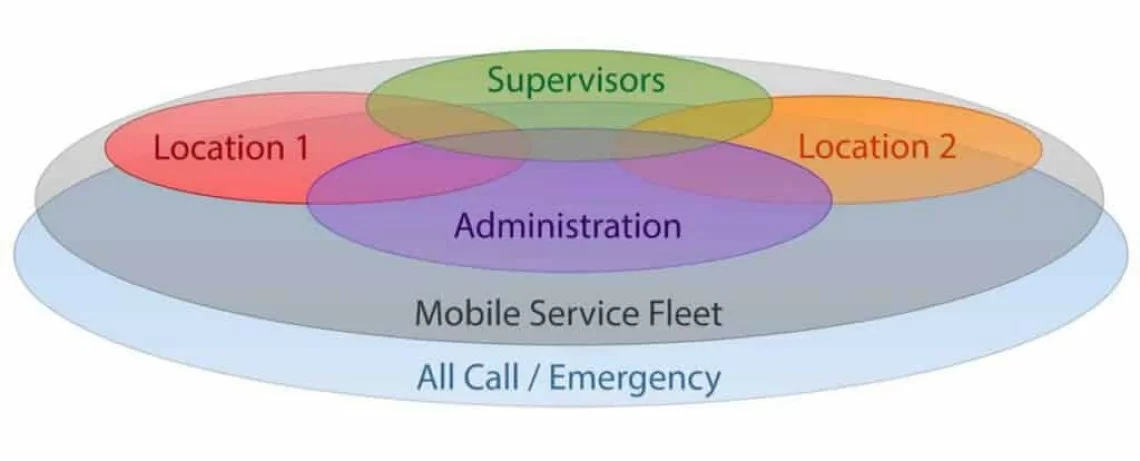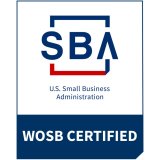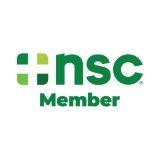What is Push-to-Talk over Cellular?
What is Push to Talk over Cellular?
Push-to-Talk over Cellular (PoC) provides group communication services over 4G and Long Term Evolution (LTE) technology, creating a nationwide radio network that utilizes the cellular infrastructure of Mobile Network Operators. This enables radio networks with very wide coverage areas. Radio users are untethered by the range of repeaters and base stations used in traditional radio networks.
The concept of Push-to-Talk over Cellular was introduced by Nextel in 1987 as an alternative to two-way radios. Nextel revolutionized business communication when it started to pass small voice packets across their iDEN network. Prior to PoC, business communication was dominated by two-way radios on peer-to-peer and local radio networks. Nextel was acquired by Sprint, and in 2013 Sprint decommissioned the Nextel iDEN network.
Today, PoC provides the best of both narrowband digital radios and broadband 4G/LTE networks. PoC radios support the advanced features of Digital Mobile Radios (DMR), including messaging, instant group calling, GPS location tracking, and emergency notifications. Combining this functionality with Wi-Fi and 4G/LTE cellular networks provides the the national coverage area and bandwidth required for modern data and video applications.
How PoC Works
PoC is also referred to as Radio over IP (RoIP). Similar to Voice over IP (VoIP), RoIP devices are handheld two-way radios that access cloud based PoC services via the internet for voice and video calling. A data plan SIM card (similar to those used in cell phones) is installed in the PoC device to enable access to the internet using the 4G/LTE cellular infrastructure of Mobile Network Operators like AT&T, T-Mobile, and Verizon.
PoC radios are also known as Internet of Things (IoT) devices that access the internet for data communications and can also access the internet via Wi-Fi networks like any other mobile device.
This alphabet soup of terminology gets confusing, but simply put, PoC devices access the internet through 4G/LTE cellular networks and Wi-Fi networks for wide-area radio communications. The result is access to existing and reliable networks that require no maintenance or operational expenses. An app on the PoC device (typically an Android operating system) provides simple and convenient access to PoC services.
PoC network services are typically hosted on the cloud using PoC controllers (network appliances) that are operated by a PoC platform service provider. PoC controllers can also be privately owned and operated by the customer. Gateway routers provide connectivity between the 4G/LTE network and the cloud hosted PoC controller. Dispatch Applications and the Management Application (used to configure customer accounts) are connected to the PoC cloud server through the internet.
 PoC Group Calling
PoC Group Calling
PoC provides the same group calling capabilities as traditional two-way radio systems to enable instant group calls to multiple users with the press of a PTT button on a radio or from a dispatching application.
 Call groups are set up based on all call and emergency calls, types of employees (supervisors, administrators, etc.), remote employees and mobile service fleets, employee locations, type of projects, etc. Radio users can belong to multiple groups as shown in the overlapping areas.
Call groups are set up based on all call and emergency calls, types of employees (supervisors, administrators, etc.), remote employees and mobile service fleets, employee locations, type of projects, etc. Radio users can belong to multiple groups as shown in the overlapping areas.
PoC Devices
Hytera PoC devices are purpose built for professional business communications. These compact, rugged, and easy-to-operate handheld devices enable instant group voice and video communications over Wi-Fi and nationwide LTE cellular networks and can automatically switch over to the LTE network when out of Wi-Fi range.
They are rugged with IP ratings for water submersion and dust resistance and MIL-STD 810G compliant for shock and vibration, and feature digital noise suppression and high-volume speakers for excellent voice quality in loud environments. They also feature powerful Lithium-Ion Polymer batteries for guaranteed operation over long shifts.
Hytera PoC devices are feature rich with high-resolution LCD displays, prominent PTT buttons, built-in GPS for dispatch applications, Bluetooth, and cameras for video conferencing and sending images.
| Category: | Two-Way Radio |





